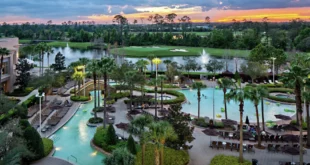
WHEN OPPORTUNITY KNOCKS
Five Industry Leaders Share Their Stores
Russ Leavitt of Telgian Holdings attended a company event to welcome new staff and asked a young woman about her job. She replied, “I’m just a sprinkler system designer.” Recently, Russ shared this anecdote, and while discussing this young technician’s response with a group of industry associates, several of us reminisced about our own early days in the profession. Each of us started our highly successful fire and life safety careers as trainees in administration, installation, or system layout. As we talked, it was apparent that regardless of where we start our journey, we are only truly limited by our own lack of vision and desire.
Many of the innovators and leaders in the world of fire and life safety are from the technician side of the industry. In today’s world, however, it seems that the role of technicians has lost some of its luster, and recruiting individuals to train and learn technician skills is becoming increasingly difficult. We all know technicians who earned their professional engineering credentials and moved to the consulting world while others became contractors, started businesses, or used their knowledge and skills as Authorities Having Jurisdiction (AHJs) for the public and private sectors. The fire and life safety professionals involved in the above discussion agreed to share their stories to demonstrate the variety of paths one can take and that no matter what your individual goals might be, they can be attained by those who begin their career as a technician.
The individuals profiled in this article became acquainted with one another while working in California during the early days of their careers. In fact, four of the five worked together in San Diego, California, where they made significant contributions to the fire protection profession and industry. Each has followed their own path to different roles. Still, they have much in common, including the desire to learn, pursuing “outside the box” opportunities, engaging in professional organizations, obtaining certifications and licenses, and most importantly, a passion for our mission to save lives and property. This passion helped them to recognize and take advantage of opportunities to compose and provide technical training, create dynamic new products, participate in the standards and code development process, and serve as ambassadors for fire and life safety throughout the world.
On closer examination, you will find that none of the individuals completed a formal education in engineering. In fact, only two have undergraduate degrees, and their degrees are not related to this profession. Most of their technical training took place on the job as there were few institutions or organizations where extended fire protection training could be found for entry- and mid-level technicians. One of the challenges we face in the fire protection community is that this is still largely the case, although some formal training and academic options can be found. In lieu of formal training, we took advantage of every opportunity to learn, including seeking out mentors, participating in industry associations, attaining professional certifications, and exchanging information with other like-minded professionals. And we never said “no” or “not interested” when opportunities to extend our knowledge and skills were presented.
Bob Caputo, James Golinveaux, Russ Leavitt, Steve Leyton, and Ken Wagoner all had remarkably similar introductions to the fire protection industry. It’s safe to say that none of us had a career in the fire sprinkler industry on our minds during our “growing up” years. Most of us did not know anything about fire sprinklers until we were presented the opportunity to be a part of this worthy profession—in other words, the fire sprinkler industry found us rather than any of us seeking out and finding fire sprinklers.
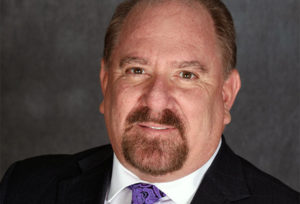
Bob Caputo was first introduced to fire protection systems while serving in the Navy. After discharge, he took a job with a small fire sprinkler contractor in San Diego. He worked in the shop, as an installer, and finally as a design trainee. He still recalls that the worst project he was ever involved with as an installer was a retrofit for a restoration project on which he did the design.
In 1981, Ken Wagoner was a 26-year-old looking for a career and answered an ad for a contract administrator with Grinnell Fire Protection. He was offered a job as the engineering department secretary for the Denver office. He transferred to the San Diego office with a position in purchasing. He was eventually asked by his former supervisor to join him in his new venture as a fire sprinkler system design trainee.
Our resumés clearly demonstrate that learning design is a great way to build a solid foundation for a career in this industry, so perhaps it’s not a coincidence that our stories are so much alike. We all entered the profession between 1979 and 1982. Each of us began our design careers using drawing boards, and we laid out backgrounds by hand on vellum or Mylar. With some experience, we mastered manual hydraulic calculations. As grunts, we ran blueprints in the ammonia room and lived to tell about it. (Steve vividly remembers the day he spilled a half-gallon of anhydrous ammonia on the carpet while trying to change the bottle, then running out of the room and slamming the door behind him.) Russ remembers the feeling of pure joy when he was able to program the Hazen-Williams formula into his handheld calculator for determining friction loss, allowing him to discard multiple three-ring binders filled with friction loss factors for the various diameters and types of pipe along with the unlimited variations of flow.
While we each had mentors and trainers who taught us many things, most of our skills were developed through our own initiative. Steve Leyton’s path was one of taking advantage of opportunities when they were presented. Less than five years into his career, he was invited to join a start-up fire sprinkler contractor business as the design manager. Though he was the only designer at the time, he was tasked with building the design department along with setting standards, providing training, and ensuring that projects were delivered on time with a high degree of accuracy. In seven years with the firm, he took on roles in sales and estimating, project management, and corporate administration. He created a residential sprinkler division which included negotiating a residential pay scale with the sprinkler fitter’s union and the special training needed to install residential systems. Finally, he conceived and assisted in the creation of software for stock-listing, fabrication, and inventory for sprinkler systems material and equipment. That package, originally known as SLIC, was sold to Central Sprinkler, where it became the basis for the stock-listing utility in their SprinkCAD software.
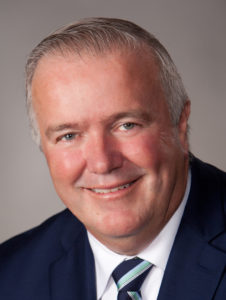
James Golinveaux’s story is classic. He joined the trade in 1982 as a design trainee with Allied Fire Protection in Oakland, California, and rose to the position of design manager. In 1991, he took, as he calls it, “my biggest leap of faith” when he accepted the position of director of technical services with Central Sprinkler and moved across the country to Lansdale, Pennsylvania. One year later, he was promoted to vice president of engineering, and in 1993, he took the role of senior vice president over research and development (R&D). He continued in the role after the purchase of Central Sprinkler by Tyco, and during his tenure in R&D, he was named on over 60 fire protection patents globally. James has continued to take advantage of opportunities as they were presented.
Each of us became involved with trade and professional organizations early on, which has been instrumental in our careers and accomplishments. Bob joined with Russ, Steve, and Ken as founding members of the San Diego Fire Protection Association (SDFPA). Each served as officers and committee members in the association. Involvement with SDFPA presented opportunities to provide technical training for our industry and work closely with fire officials, manufacturers, and distributors, as well as associated service providers. In 1986, Bob volunteered to conduct AHJ training for San Diego County fire prevention officers on behalf of the association, a role that Ken took over when Bob moved out of San Diego. Over the course of nearly 20 years, the training sessions were held monthly and eventually led Bob to training opportunities with the American Fire Sprinkler Association (AFSA) and the National Fire Protection Association (NFPA). Bob has traveled the world, providing training sessions on all manner of fire protection systems, and is known globally as one of the best instructors in our industry.
Not to be outdone, James, Ken, Russ, and Steve have each spent their careers providing training throughout the United States and globally. For several years, Steve had an almost permanent presence in the Middle East while James visited dozens of countries providing technical training and leadership. Ken’s role has also grown far beyond San Diego, and he has been a senior instructor for AFSA for years. All of us have been regular speakers and presenters at regional, national, and international meetings and conventions for AFSA, NFPA, NFSA, SFPE, and other trade and professional organizations.
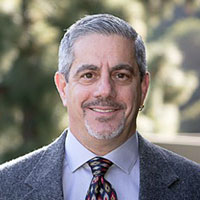
One of the most important roles we have all undertaken is to be involved in the development of code and standards. Several organizations are vested with the maintenance and publication of the codes and standards used in our industry, particularly the NFPA and the International Code Council (ICC). Each of us has been deeply involved with NFPA by serving on various technical committees, including installation standards for fire sprinkler systems, fire pumps, water mist systems, private fire mains, standpipe systems, and life safety codes, to name a few. Additionally, we have served as the chairs of committees and councils: Ken previously served, and Bob is currently serving as chair for NFPA 24, Standard for the Installation of Private Fire Service Mains; Steve as chair of NFPA 14, Standard for the Installation of Standpipe and Hose Systems; and Russ as chair of the NFPA 13, Standard for the Installation of Sprinkler Systems, Sprinkler System Discharge Criteria technical committee. James has the distinction of serving as chair of the NFPA Standards Council, which oversees the development of all NFPA codes and standards, which includes approximately 300 documents. Russ serves on the board of directors for NFPA and is the incoming chair.
The common theme for this group is that we did not wait to be invited. We simply got involved. We did not base our involvement on whether or not we were going to be reimbursed for the time and expense by our employers. We did not ask, “What is in it for me?” When these opportunities presented themselves, we jumped into them because we understood they would foster personal and professional growth and also benefit our industry. We each intuitively knew that the more involved and visible we made ourselves, that great and unique opportunities would ensue.
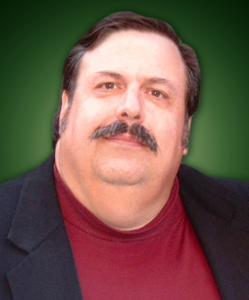
It would be remiss not to recount some of the technical contributions made by this group of fire protection professionals, as all have been instrumental in the evolution of the fire protection industry as it keeps pace with new and ever-progressing technology. Steve was one of the first to recognize the need for A/E firms to include the basis of design for the installation, hanging, and bracing of fire protection systems. He founded his firm with the idea of delivering these comprehensive design consulting services to architects and developers. Protection Design & Consulting was one of the first firms in the United States to offer REVIT-based system design.
In addition to his scientific contributions, James saw the need for the correlation of fire sprinkler design criteria with the full-scale testing which was conducted over the years. He led a two-decade-long effort for NFPA 13 to recognized and incorporate “single-point” design criteria. His efforts were finally rewarded when the proposed change was accepted for the 2022 edition of the standard.
Ken has long been nationally recognized as a leader in the outsourcing of plan review services. He was a pioneer in the use of electronic plan submittal technology and procedures. His efforts led to a streamlined and eco-friendly method for contractors and builders to submit drawings for AHJ approval and the issuance of construction permits. We are now seeing not only plans being submitted and approved electronically but also the use of technology in the conduction of remote inspections and tests for system acceptance. As a benefit of his membership on the hanging and bracing committee of NFPA 13, Ken developed a series of online courses in seismic protection of fire sprinkler systems through AFSA.
Bob is a leading international expert on the installation of fire sprinkler systems. He is the author of a widely used and acclaimed program for training in the skills of project and jobsite management. He has written and delivered numerous training programs for industry and professional organizations, including AFSA and NFPA. He and Russ wrote and developed the AFSA program and curriculum for the training of water-based inspection technicians.
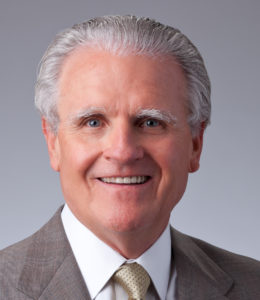
Russ chaired the task group—which included James and Bob—that was charged with the reorganization of NFPA 13 to bring it in line with modern protection practices and users of the standard. This was a monumental task that was focused on making the standard friendlier to the non-expert user. The resulting document has been praised by contractors, AHJs, and other users for its more intuitive organization and layout. An important thing to consider in all of this is that much of the work performed by this group of individuals was done on their own time and often at their own expense. Of course, that does not mean their volunteer efforts did not have a direct positive influence on their career opportunities and earning power. The impact in many cases was profound, but it can be safely stated that career advancement and better compensation were not the driving forces for these individuals. It was their passion and love of the industry that was foremost in their minds—the resultant leadership, technical, and career opportunities were the byproducts of their efforts. Along the way, each has been widely recognized for their contributions, including awards from industry and professional organizations. AFSA has bestowed their highest honor, the Henry S. Parmelee Award, to Bob, James, and Russ for their lifetimes of service.
So, where are we now? Consider this:
• Bob serves as president of AFSA;
• James is president and CEO of the Viking Group, a global leader in fire protection manufacturing, and serves as chair of the NFPA Standards Council;
• Russ is executive chair of Telgian; and Holdings, Inc., and first vice-chair of NFPA;
• Steve is the founder and CEO of Protection Design & Consulting; and
• Ken is president of Parsley Consulting.
Not bad for five guys who at one time were all “just sprinkler designers.” Still, keep in mind that for each of us, it did not “just happen.” At some point and in our own ways, we each committed to learning everything possible about our profession, took full advantage of opportunities when they were presented, and took a vow to “give back” to the profession and industry. Remember, it is not where you start but what you choose to do with your career that sets its course. The longest and most adventurous journey begins with a first step. At some point or another, we’ve all been asked, “How can I do what you have done?” We hope that sharing our stories can at least partially answer that question.
Finally, there is still a lot of runway in front of new and existing fire sprinkler enthusiasts, and we are still learning about the interaction of automatic sprinklers with the ever-changing fire scenarios we face. If we were 18 years old all over again, any one of us would be excited about the opportunities ahead. With a dedication to learning and participating in this fantastic industry, the opportunities will find you, but they are rarely given to those who expect it. Volunteer until it hurts, get used to cold rubber chicken banquet dinners, and welcome the industry knowledge shared at these events. The rules are established by those with great intentions and reasonable data. Change is inevitable and will be championed by those who participate and have gained knowledge—will you be part of it?
ABOUT THE AUTHORS: Bob Caputo, CFPS is president of AFSA; James Golinveaux is president and CEO of The Viking Corporation; Russ Leavitt, CFPS, SET, is executive chair of Telgian Holdings, Inc.; Steve Leyton is founder and owner of Fire Protection Design & Consulting; and Ken Wagoner, CFPS, is president and owner of Parsley Consulting.

 Sprinkler Age A Publication of the American Fire Sprinkler Association
Sprinkler Age A Publication of the American Fire Sprinkler Association
